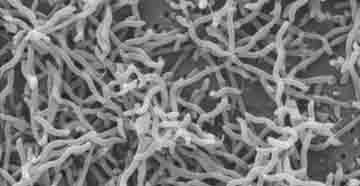|
Until several years ago, Campylobacter jejuni was assumed to be the most common cause of human acute bacterial enteritis in developed countries. Refined analytical and diagnostic methods have shown, however, that the enteritis may be caused by a variety of Campylobacter species and also by other bacteria such as Helicobacer and Arcobacter. They are all part of Epsilonproteobacteria, a class of Proteobacteria. Arcobacters are gram-negative curved, s-shaped, or helical rods with a single polar flagellum which do not form spores. They grow aerobically in a relatively wide temperature range from 15 to 42°C.
During an 8-year study period on humans, Arcobacter butzleri was found to be the fourth most common Campylobacter-like organism isolated from almost 70 thousand stool specimens. Compared to C. jejuni, A. butzleri is more frequently associated with a persistent, watery diarrhea.
Specific conditions were used to isolate A. butzleri from animal feces. Authors Ellen Van Driessche et al.
used blood agar plates and 50 ml lysed defibrinated horse blood per 1000 mL of the medium. They incubated the plates for 48 h at 28°C under microaerobic conditions created by evacuating 80% of the normal atmosphere and introducing a gas mixture of 8% carbon dioxide, 8% hydrogen, and 84% nitrogen into the jar. This incubation atmosphere was used for all further Arcobacter isolations.
Livestock animals appear to be a significant reservoir of Arcobacter. The incidence of these bacteria in various foods such as raw and undercooked meat, unpasteurized milk, shellfish and also in surface and ground water has received attention of an increasing number of researchers. The most recent link also advises how to prevent Arcobacter infection. There are at least 8 important precautions concerning the cooking of the foods of animal origin (internal temperature at least 74°C or 165°F), rapid cooling and refrigeration of unconsumed food, avoiding cross contamination of cooked foods with raw foods, prevention of raw meat juice dripping on other foods in the refrigerator, avoiding the re-use of marinades from raw meat or poultry, washing hands, utensils and surfaces which were in contact with raw meat, drinking bottled water when travelling in areas where tap water may not be safe to drink, etc.
|
